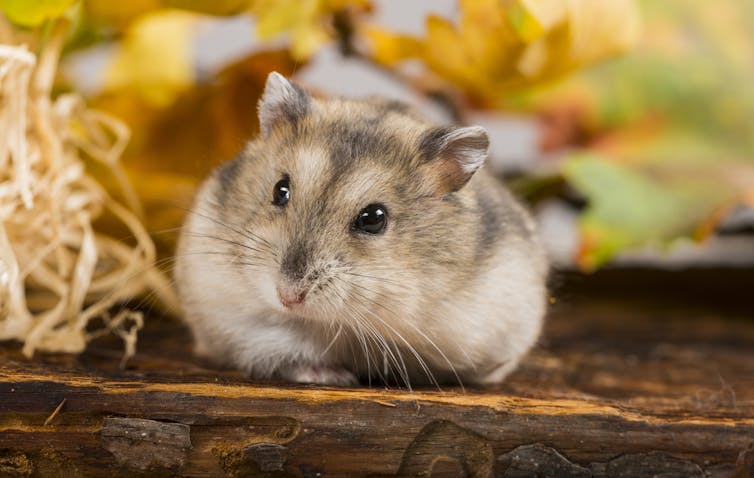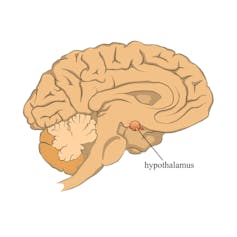Obesity: hamsters may hold the clue to beating it
Dr Gisela Helfer explains how hamsters may hold the clue to obesity
 Siberian dwarf hamster (Phodopus sungorus). By Kuttelvaserova Stuchelova/Shutterstock.comGisela Helfer, University of Bradford and Rebecca Dumbell, MRC Harwell Institute
Siberian dwarf hamster (Phodopus sungorus). By Kuttelvaserova Stuchelova/Shutterstock.comGisela Helfer, University of Bradford and Rebecca Dumbell, MRC Harwell Institute
The global obesity crisis shows no signs of abating, and we urgently need new ways to tackle it. Consuming fewer calories and burning more energy through physical activity is a proven way to lose weight, but it’s clearly easier said than done. The problem with eating less and moving more is that people feel hungry after exercise and they have to fight the biologically programmed urge to eat. To develop effective ways to lose weight, we need a better understanding of how these biological urges work. We believe hamsters hold some clues.
Hamsters and other seasonal animals change their body and behaviour according to the time of year, such as growing a thick coat in winter or only giving birth in spring. Some seasonal animals can also adjust their appetite so that they aren’t hungry when less food is available. For example, the Siberian hamster loses almost half its body weight in time for winter, so they don’t need to eat as much to survive the winter months. Understanding the underlying physiological processes that drive this change may help us to understand our own physiology and may help us develop new treatments.
 The appetite centre. stefan3andrei/Shutterstock.com
The appetite centre. stefan3andrei/Shutterstock.com
How hungry we feel is controlled by a part of the brain called the hypothalamus. The hypothalamus helps to regulate appetite and body weight, not only in seasonal animals but also in humans.
Tanycytes (meaning “long cells”) are the key cells in the hypothalamus and, amazingly, they can change size and shape depending on the season. In summer, when there is a lot of daylight and animals eat more, tanycytes are long and they reach into areas of the brain that control appetite. In winter, when days are shorter, the cells are very short and few.
These cells are important because they regulate hormones in the brain that change the seasonal physiology of animals, such as hamsters and seasonal rats.
Growth signals
We don’t fully understand how all these hormones in the hypothalamus interact to change appetite and weight loss, but our recent research has shown that growth signals could be important.
One way that growth signals are increased in the brain is through exercise. Siberian hamsters don’t hibernate; they stay active during the winter months. If hamsters have access to a running wheel, they will exercise more than usual. When they are exercising on their wheel, they gain weight and eat more. This is true especially during a time when they would normally be small and adapted for winter. Importantly, the increased body weight in exercising hamsters is not just made up of increased muscle, but also increased fat.
We know that the hamsters interpret the length of day properly in winter, or, at least, in a simulated winter day (the lights being on for a shorter duration), because they still have a white winter coat despite being overweight. We now understand that in hamsters the exercise-stimulated weight gain has to do with hormones that usually regulate growth, because when we block these hormones the weight gain can be reversed.
When people take up exercise, they sometimes gain weight, and this may be similar to what happens in hamsters when appetite is increased to make up for the increased energy being burned during exercise. This doesn’t mean that people shouldn’t exercise during the winter, because we don’t naturally lose weight like Siberian hamsters, but it does explain why, for some people, taking up exercise might make them feel hungrier and so they might need extra help to lose weight.
 We need to find ways to overcome appetite. Lucky Business/Shutterstock.com
We need to find ways to overcome appetite. Lucky Business/Shutterstock.com
What we have learned from studying hamsters so far has already given us plenty of ideas about which cells and systems we need to look at in humans to understand how weight regulation works. This will create new opportunities to identify possible targets for anti-obesity drugs and maybe even tell us how to avoid obesity in the first place.![]()
Gisela Helfer, Lecturer in Biomedical Science, University of Bradford and Rebecca Dumbell, Postdoctoral Training Fellow, MRC Harwell Institute
This article is republished from The Conversation under a Creative Commons license. Read the original article.
